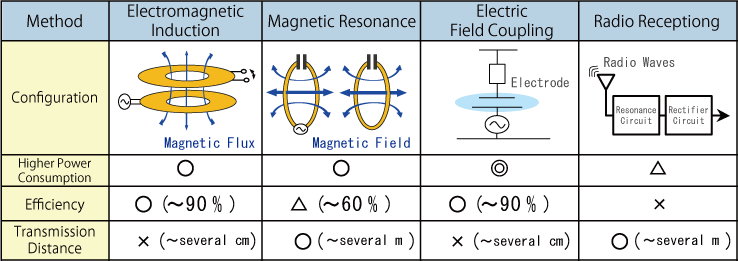Wireless Charging Methods
Various charging methods for supplying power wirelessly exist.
Below are typical configurations.

A general wireless charging system featuring a simple, compact, low-cost circuit structure that transmits power using induced magnetic flux generated between the power transmission and receiving sides.
It is also characterized by high efficiency.
Drawbacks include short transmission distance and susceptibility to misalignment.
In this system, power is transmitted through magnetic resonance utilizing resonators on the transmitting and receiving sides.
This method is typically used when long transmission distance is required, and is being promoted for EV charger applications.
However, efficiency is an issue.
A transmission method achieved by facing electrodes on the power transmitting and receiving sides towards each other to form a capacitor, using the phenomenon in which current flows between electrodes at high frequency (harmonic current).
The transmission distance is short, similar to the electromagnetic induction method, but is less susceptible to misalignment and less heat is generated in the power supply block.
One disadvantage is increased thickness of the high voltage transformer.
This system converts current to electromagnetic waves on the transmitter side, receives the electromagnetic waves from an antenna on the receiver side, converts the waves to direct current using a rectifier circuit, then transmits power through an electromagnetic field. Although the transmission distance is relatively long (up to several meters), efficiency is poor.




